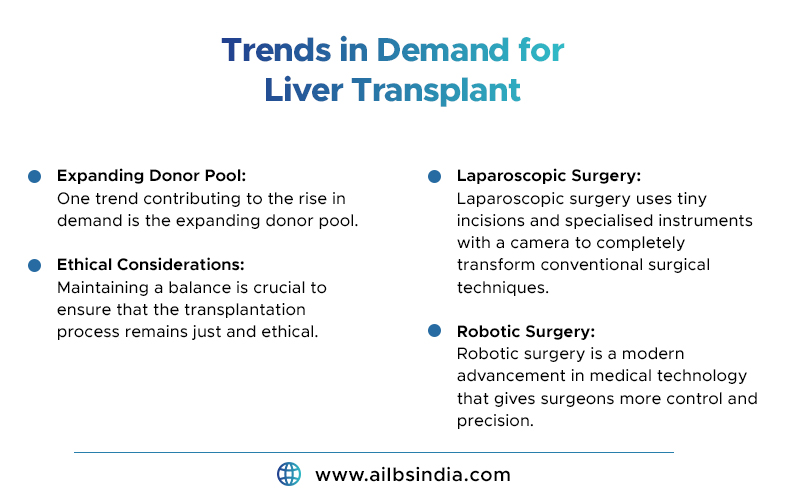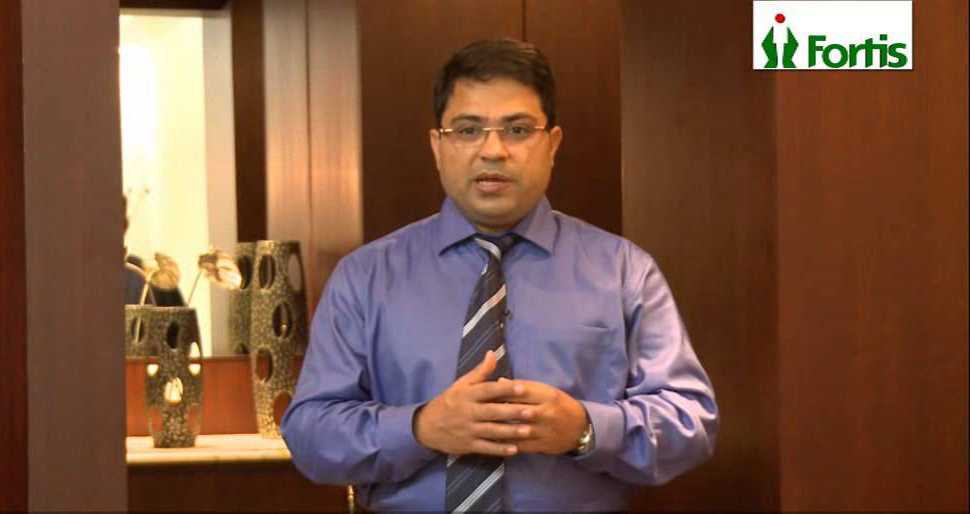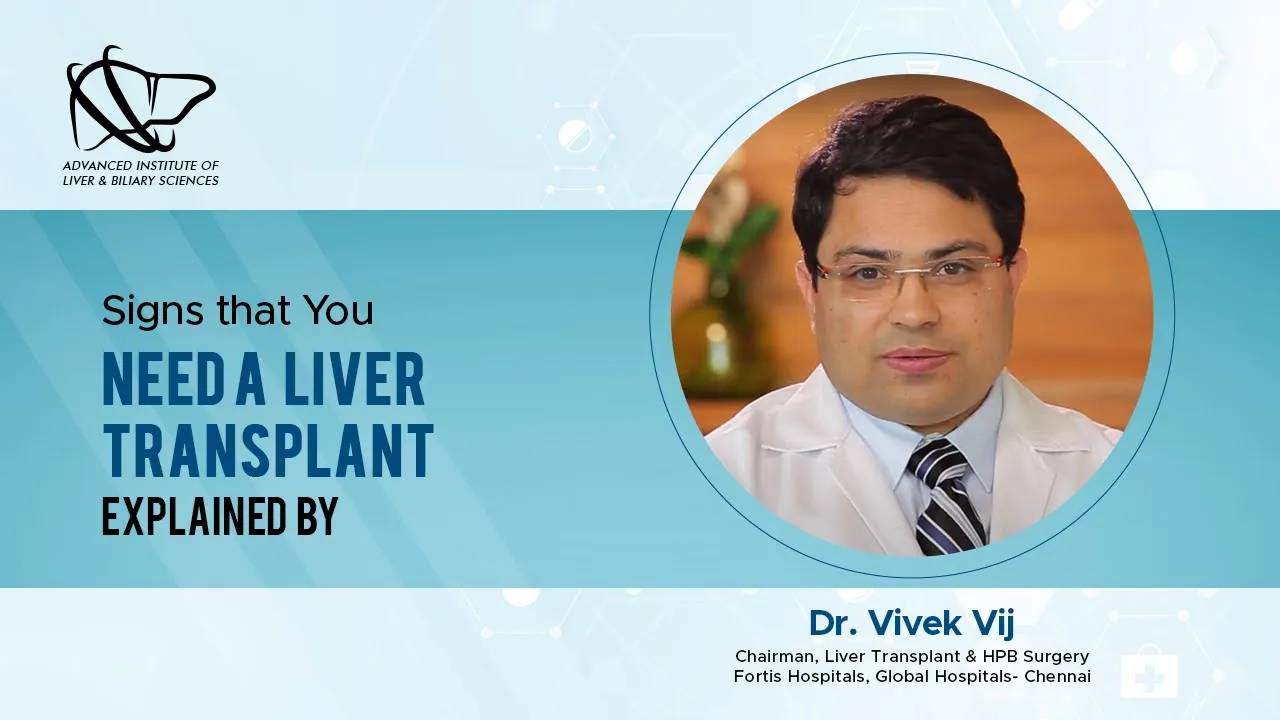
In recent years, there has been a growing concern about liver diseases and the need for liver transplant surgeries. The advancements in liver transplant surgeries are growing at a rapid pace, which gives new hopes for life with fewer problems and high success rates.
In this blog, we’ll take a closer look at the trends in demand for liver transplants, understanding why these surgeries are becoming more prevalent and what the future might hold for those in need of a new liver.
For someone whose liver is damaged and unable to function correctly, a liver transplant may be the best course of action. This procedure replaces the damaged liver with a healthy liver from a deceased or living donor. Liver transplants have saved many lives, but why is the demand for these surgeries on the rise? Let’s know why.
One significant factor driving up demand for liver transplants is the rising number of liver diseases. A rising number of people have been diagnosed with hepatitis, fatty liver disease, and cirrhosis. These diseases can severely damage the liver, making transplantation the only viable option for many patients.
According to some recent research, Globally, the prevalence of Non-Alcoholic Fatty Liver Disease is estimated to be around 25% (22%-28%), while the majority in Asia is about 27% (22% – 32%).
Improvements in medical technology have led to an increase in liver transplant surgery success rates. This indicates that a more significant number of patients have survived the process and are living longer, which has driven up demand for transplants. Furthermore, advances in medicine are making transplantation safer and more widely available.

One trend contributing to the rise in demand is the expanding donor pool. In the past, only deceased donors could provide livers for transplantation. But thanks to developments in medical care, living donors are now able to donate a portion of their liver. This reduces the time patients wait for organs and increases the quantity of available organs.
The growing demand for liver transplants raises ethical questions about organ allocation. Determining who receives a transplant can be a complex process involving factors like medical urgency, compatibility, and fairness. Maintaining a balance is crucial to ensure that the transplantation process remains just and ethical.
Laparoscopic surgery, also known as minimally invasive surgery, uses tiny incisions and specialised instruments with a camera to completely transform conventional surgical techniques. Surgeons can now perform a variety of procedures, including liver surgeries, with a great deal less trauma to the patient thanks to this technique. Compared to open surgeries, patients typically have less pain, a shorter recovery time, and less scarring from smaller incisions.
Robotic surgery is a modern advancement in medical technology that gives surgeons more control and precision. With the help of robotic systems like the da Vinci Surgical System, surgeons can execute complex operations with enhanced flexibility and a three-dimensional, high-definition picture of the operating field. The robotic method aims to provide enhanced comfort and do away with shaking hands by overcoming the drawbacks of conventional laparoscopic procedures.
As we look ahead, several factors will likely shape the future trends in demand for liver transplants.
One positive aspect is the increasing awareness of liver diseases and the potential need for transplantation. Early detection and intervention can prevent the progression of liver diseases, reducing the demand for transplants in the long run.
Liver transplantation may have a bright future thanks to the field of regenerative medicine. Researchers are looking into ways to encourage damaged livers to regenerate in order to lessen the need for liver transplants. Even though these methods are still in their early stages, they give hope for a day when transplant procedures will become less common.
Developments in organ preservation methods may impact the need for liver transplants in the future. To help solve the current organ shortage, more viable organs could be made available through improved techniques for preserving organs during storage and transportation.
In conclusion, the trends in demand for liver transplant surgery reflect the evolving landscape of medical science and the healthcare industry. The rising incidence of liver diseases, coupled with advancements in technology, has led to an increased need for transplant surgeries. While challenges continue, ongoing research and innovations hold promise for a future where liver diseases can be managed more effectively, reducing the demand for transplants.
So, if you are looking for the best liver transplant surgeon in India, consult with Dr Vivek Vij. He has years of experience in delivering the best liver transplant treatment to his patients. Book an appointment now to know more.
Answer: Some people need liver transplants because their livers are damaged or not functioning correctly due to diseases like cirrhosis, hepatitis, or fatty liver disease. A transplant becomes necessary when other treatments can’t fix the problem and the damaged liver can’t support the body’s needs.
Answer: The decision involves factors such as the severity of the liver disease, medical urgency, and the patient’s overall health. A scoring system helps prioritise patients on the transplant waiting list. It’s a complex process, aiming to ensure fairness and provide transplants to those who need them most.
Answer: Laparoscopic surgery, also known as minimally invasive surgery, involves making small incisions and using a tiny camera to perform the surgery. This technique reduces pain, scarring, and recovery time compared to traditional open surgery. It’s becoming a popular choice for liver surgeries because it offers several benefits to patients.
Answer: Yes, living people can donate a portion of their liver for transplantation. The liver has the remarkable ability to regenerate, and both the donor’s liver and the recipient’s transplanted portion can grow to standard size. This option helps increase the number of available organs and decreases the time patients spend waiting for a transplant.


